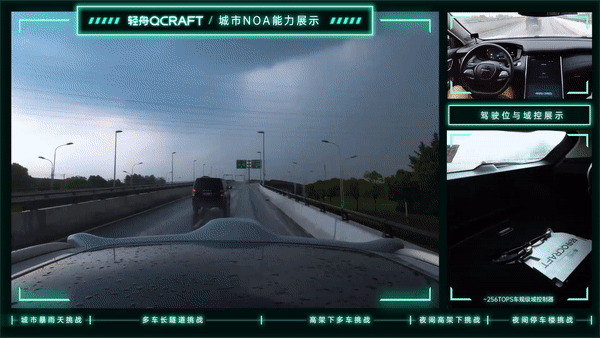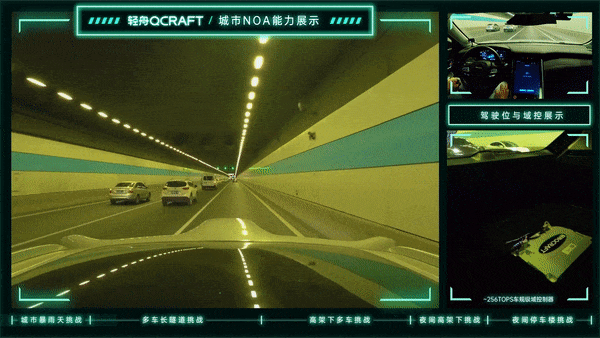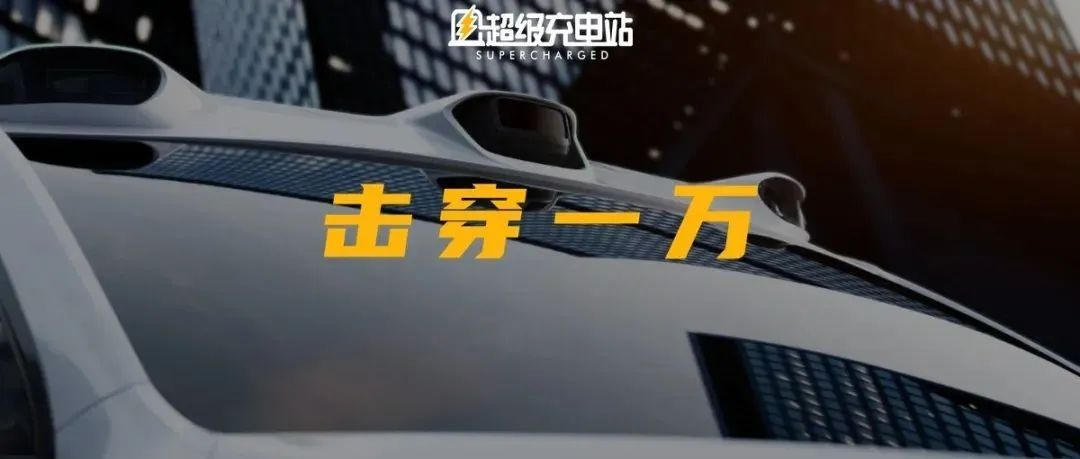Author: ShuTiaoYu
To ask who is the brightest star in the field of intelligent vehicles, the Laser Radar Award undoubtedly takes the crown this year.
Currently, the top three new car-making forces, including WM Motor, have all launched products with laser radar sensors. The reason for this rare agreement is straightforward—the combination of laser radar and visual cameras seems like a magic bullet for enhancing the environment perception capability of intelligent vehicles.
Though the supplement may be beneficial, the cost of overindulgence is high. This is especially evident in the prices of models that offer laser radar as an optional feature.
So, how much would it cost to have a City NOA Navigation Assistance Driving Scheme with a laser radar? The answer is ¥10,000, according to QZ Intelligent Navigation Systems.
Point to Mass Production
The “less is more” concept gives rise to the low cost.
Despite being an L4 company, QZ Intelligent Navigation Systems seems particularly pragmatic. Their slogan “A laser radar can achieve L4-level experience for City NOA” embodies this philosophy. Their City+Highway NOA (DBQ V4) solution consists of one laser radar, eleven cameras, five mmWave radars, and a 256-TOPS computing platform by double horizon journey.

“We believe that piling up components in autonomous vehicles is an unsophisticated approach from which both customers and us cannot derive the most significant value… We are very adept at comprehending the operating ability of autonomous driving under such severely limited computational conditions,” said Yu Qian, CEO of QZ Intelligent Navigation Systems.
They believe that City NOA encounters more complex scenes than Highway NOA and that adding a laser radar capable of accurately capturing position, shape, size, motion status and other information is essential. However, adding another laser radar will significantly reduce the marginal benefit, according to QZ Intelligent Navigation Systems’s CTO, Hou Cong.Therefore, they believe that the configuration of a single DBQ V4 standard version LiDAR is the most cost-effective solution.

Of course, if customers are willing to spend more money to pursue more extreme environmental perception capabilities, Qingzhou Navigation (QZNN) stated that DBQ V4 is also capable enough. In this current scheme, it can support up to 5 LiDARs.

More configuration types often mean higher software adaptation costs. In this regard, QZNN, with software algorithms as its core competitiveness, expresses great confidence.
They stated that the system’s generalization ability is very strong in this scheme. For the same model, the algorithm does not need to be retrained. Only with corresponding data for a single tuning, it can adapt to hardware schemes with 1 to 5 LiDARs.
This generalization ability is also evident in the adaptation to different installation positions and models of sensors. With slight adjustments, it can quickly adapt to customized solutions for different vehicle models.

Low-cost standard configuration, scalable solution, and quick adaptation capability. I read “mass production” from these features of DBQ V4.
“See the efficacy without advertising.”
The theory is ultimately about the subtext of sensory stimulation. How does it actually perform? QZNN brought 7 practical tests under complex scenarios.
Driving in the rain.
The challenge of driving in the rain is that rainwater interferes with the precise judgment of LiDAR and also blocks the camera view. The recognition difficulty of lane markings on the road also increases due to stronger reflection. Judging from the performance of DBQ V4, this is only an appetizer.

Continuous bends are also not a problem.

Large truck blocking view at night
Poor visibility at night + being sandwiched by large trucks on both sides. This situation may make many real-life drivers nervous. The system slows down to exit from the gap between the large trucks to obtain a more complete surrounding situation.
Overtaking and stopping at emergency lanes.
The execution of overtaking and stopping maneuvers are decisive when it comes to avoiding obstructing vehicles.

Lane changing and overtaking.
In this scenario, the test vehicle played the role of a gentleman by taking the initiative to slow down and avoid colliding with other vehicles. While this maneuver may not be regarded as that of an experienced driver, from a safety standpoint, it’s best not to criticize it.

Vehicles and people mix at intersections.
This is a classic unprotected left turn scenario, and even when interrupted by other vehicles attempting to overtake, it was able to pass safely.

Tunnel driving.
When driving through long tunnels, one might as well forget about GPS signals, but the DBQ V4 was still able to proceed at the speed limit.

Parking tower driving.
Self-driving up to the 7th floor of the parking tower and completing parking.

The Eve of Advanced Autonomous Driving
Today, L4 companies actively dropping their goals for L2+, L3 solutions is becoming a trend.
To be honest, on the one hand, this is a survival strategy since the large-scale commercialization of L4 would still require more time to address the long-tail effects caused by more Corner Cases, whereas L2+, L3 mass production delivery is closer in sight. On the other hand, for those L4 companies with accumulated algorithm and technology, turning to a relatively lower level of autonomous driving is more likely to result in a reduction of costs and effects.
From our initial contact, Light the Lighthouse’s solution has shown potential in this regard.
 On the cost side, a better algorithm, to some extent, means completing the same goal with lower computing resources. In other words, a good algorithm can achieve the same L2++ level autonomous driving effect with lower performance hardware; or it can achieve a higher level of autonomous driving effect with the same hardware. The “ten thousand yuan” and “no stacking” of QZ Intelligent Pilot are almost able to read this layer of meaning.
On the cost side, a better algorithm, to some extent, means completing the same goal with lower computing resources. In other words, a good algorithm can achieve the same L2++ level autonomous driving effect with lower performance hardware; or it can achieve a higher level of autonomous driving effect with the same hardware. The “ten thousand yuan” and “no stacking” of QZ Intelligent Pilot are almost able to read this layer of meaning.

On the effectiveness side, the performance of the seven complex scenes above is apparent, and I will only mention one example that impressed me personally. When encountering parked cars, the DBQ V4’s lane-changing decision is made very quickly, but in reality, distinguishing whether the front vehicle is temporarily parked or traveling at normal deceleration is not difficult for humans, but it is different for machines. I don’t know if this is an isolated case or has universal significance, or whether I need to wait for more scene experiences in the future.

Of course, doubts still exist. For example, in the case of the seventh parking garage, QZ Intelligent Pilot used the map data inside the parking garage, but how complete is the national parking garage map data collection, the answer may not be so optimistic. And if users need to let the vehicle learn the trajectory of the parking garage first, it will be difficult to differentiate from competitors again.
But when it comes to the cost-effective ratio, don’t forget that this is a solution that costs only “ten thousand yuan.” What more can we ask for with this kind of performance?
Many people are saying that 2022 is the eve of the breakthrough of intelligent cars beyond L2, and as observers of this industry, we are equally looking forward to seeing a widespread improvement in industry average level, rather than just individual breakthroughs. A low-cost and high-availability solution is probably the correct answer to this wish.
By then, let’s study what kind of performance we can get with the “ten thousand yuan” solution.
This article is a translation by ChatGPT of a Chinese report from 42HOW. If you have any questions about it, please email bd@42how.com.
